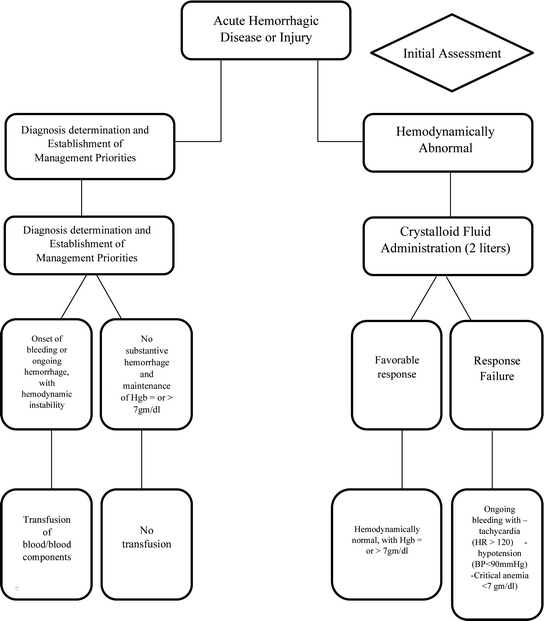Religion
Mean ISS
Type of injury
Case of injury (%)
Mortality (%)
Jehovah’s Witnesses
10.3 ± 9 (NS)
Blunt (82)
MC (39)
11.0 (NS)
Catholic
10.3 ± 11
Blunt (68)
MVC (39)
6.9
Baptist
8.9 ± 10
Penetrating (56)
GSW (31)
5.8
Under the autonomy principle, a competent patient can refuse any interventions, including one that is considered lifesaving. Refusal of treatment that ultimately results in the death of the patient who exercised his/her right to make such decisions is broadly supported by the courts—based on the patient’s autonomy principle. The prototypical situation occurs when the proposed treatment/therapy violates someone’s cultural or religious beliefs (e.g., the Jehovah’s Witness patient). However, when there are situations when parents or guardians are the ones who refuse treatment of a minor, the courts have routinely intervened to balance the interests of the child with wishes of the parents/guardians—allowing blood/blood product transfusions to be given to the minor.
It has been reported in the past that the majority (two-thirds) of the European physicians working in intensive care units would give transfusions to an unconscious Jehovah’s Witness who is losing blood, with 41 % indicating that they would not inform the patient later [10].
It is imperative that acute care surgeons not be dismissive of the legal liability if they choose to ignore a Jehovah’s Witness’ advance directive not to receive blood.
The practice guideline or algorithm for restoring intravascular volume after bleeding secondary to injury or hemorrhagic diseases is well chronicled (Fig. 27.1). The decision branches leading to the transfusion of blood/blood products are not an option for the competent patient who is a Jehovah’s Witness and refuses blood/blood product transfusion. However, there is a spectrum of management strategies for the Jehovah’s Witnesses with severe blood loss (Table 27.2).


Fig. 27.1
Intravascular volume restoration after acute hemorrhage disease or injury
Table 27.2
Armamentarium of management strategies
For Jehovah’s Witnesses with acute severe blood loss |
|---|
∙ Maximizing oxygen delivery (maintain O2 saturation >98 %) |
∙ Minimize metabolic demand (oxygen demand) |
∙ Blood conservation and minimizing diagnostic phlebotomies |
∙ Establishing optimal oxygen delivery |
∙ Preventing iatrogenic injury and associated blood loss |
∙ Stimulation of hematopoiesis |
∙ Increasing the production of red blood cells (enhancement of erythropoiesis) |
∙ Intravenous iron infusion |
∙ Recombinant human erythropoietin (rHuEPO) |
∙ Red cell substitutesa (or alternative oxygen-carrying agents) |
∙ Meticulous and limited surgical dissection |
Management Controversy
Recombinant Human Erythropoietin
After illness or injury-induced severe blood loss, the erythropoietin response is less than optimal secondary to release of inflammatory cytokines that down-regulate the erythropoietin gene, along with inhibition of bone marrow and modification of iron metabolism [11, 12]. The controversy has always revolved around some documentation that erythropoietin levels are actually preserved and that there is failure of the bone marrow to respond to erythropoietin—calling into question the utility of exogenous erythropoietin. Proponents for erythropoietin administration realize that beneficial effects take ten days to three weeks [13, 14]. Also, because some Jehovah’s Witness patients will not accept any blood product, erythropoietin might not be considered a viable option due to the fact that it does contain small amounts of human albumin, which is a blood product [15].
Special Consideration and Circumstances
Although not included, one of the key underlying trends affecting optimal health care as outlined in Table 27.3, tailoring medical management based on religious beliefs, can also affect optimal health care.
Table 27.3
Key underlying trends affecting optimal healthcare
∙ Healthcare disparities of the population |
∙ Aging of the population |
∙ Increasing rates of utilization |
∙ Economic growth of the nation |
∙ End-of-life issues |
∙ Advances in genetics screening |
∙ Changes in health services delivery system |
∙ Efforts to weed out unnecessary or marginally beneficial services |
∙ Cost containment efforts |
In its report on health literacy, the Institute of Medicine (IOM) highlighted that 90 million adults have trouble understanding and acting on health information. A patient who is fully informed regarding the full spectrum of management options, electing not to accept a potentially lifesaving intervention due to his/her religious belief, is the antithesis of someone whose “health literacy” is challenged. On the contrary, such a patient is fully informed and an active participant in his/her care. The Jehovah’s Witness represents such a cohort of patients. Even the highly touted six aims of care by the IOM (Table 27.4) the patient can completely affect whether the care is, indeed, “equitable” by refusal of the prescribed or recommended care.
Table 27.4




Institute of Medicine
Stay updated, free articles. Join our Telegram channel

Full access? Get Clinical Tree








